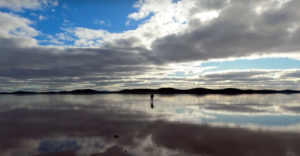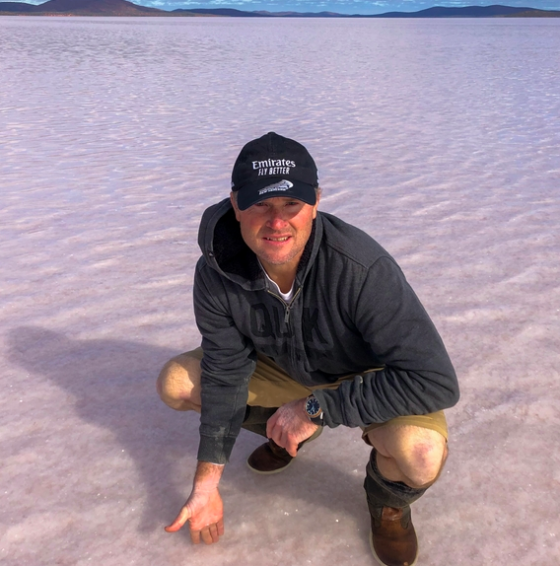
Water thwarts America’s Cup ETNZ as it waits to compete for land speed record

Emirates Team New Zealand’s ambitions to smash the wind powered land speed world record have, ironically, been put on hold as the salt lake the attempt is due to take place on, is underwater.
Lake Gairdner, the usually bone dry salt lake in South Australia, currently has about 50mm of water right now according to ETNZ land speed pilot Glenn Ashby. When dry, the vast salt lake in South Australia naturally creates a very fast and flat runway.
Ashby visited the lake in preparation for the set-up of the world record attempt.
“Three weeks ago the lake had 120mm of water in it. So we are definitely trending in the right direction,” says Ashby optimistically. “For sure this does slide our programme back by a few weeks, but nothing that I am too concerned about right now. We just need to be a bit patient.”
 Glenn Ashby measures the depth of the water
Glenn Ashby measures the depth of the waterAs previously reported by Marine Industry News, the team were looking to get going in Australia in the second week of July.
ETNZ’s meteorolgist Roger Badham has been monitoring the lake, the weather and atmospheric conditions for months now and expects to see the rates of water evaporation continue to increase. This time of year it is normal to see around 100mm of water evaporation each month and as the months clock closer to summer this will only increase. As will the winds expected over the coming months with September and October the windiest months of the year in the location.
“This situation we are in now with water on Lake Gairdner is extremely abnormal and rare historically- it’s like a usual sailing regatta where ‘the conditions are never like this’ as they say,” Ashby says.
“But the water that is on the lake now is a result of a massive rain event months ago. We have seen a huge amount of rain in Australia this year- even this week in Sydney. So it’s all very out of the ordinary, but we are tracking it and hope to be out on the Lake setting up next month and getting ready to let Horonuku fly at the first opportunity we get.”
Aside from the water, the other interesting thing for Ashby is the surface of the salt, currently under the water, which could prove to be either a help or a hinderance to the world record attempt.

“The surface of the salt now is just really smooth,” he says. “There’s not many imperfections, which is great, but it has these little layers of salt almost like broken glass. If you were walking in bare feet at the moment, you would absolutely cut your feet to shreds.
“So, I’m not really sure what that would do to the tyres of the land yacht. It might provide really good grip and traction, or it might chew the tires out really quickly. When this surface eventually dries out, we’ll be able to get the land yacht out on the surface and see what the effects are.”
This means the wider land speed team are continuing to tweak timelines, plans, and work lists for the people involved. ETNZ says Horonuku and the containerised workshops are days away from port in Adelaide. Thus, the water filled lake feels like a result in the sense that Horonuku is yet to arrive, behind the proposed schedule.
This team’s quest is to beat the wind-powered land speed record of 202.9 kilometres/hour set in 2009 by Richard Jenkins onboard his Greenbird in the US. ETNZ’s partnered with composite specialists Southern Spars NZ (Auckland, New Zealand) and has been developing the project since February
ETNZ says it has always commissioned external contracts to keep the design team sharp. So, as MIN previously reported, when an independently funded project to attempt to beat the Wind Powered Land Speed World Record emerged, ETNZ found willing designers, engineers and shore crew to put their talents to the test from being fastest on the water in the America’s Cup to being fastest on land.
